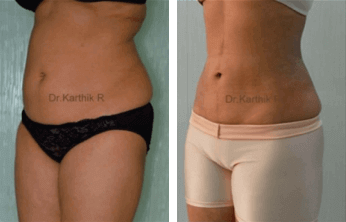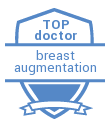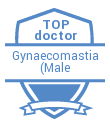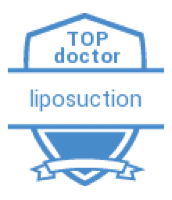Fighting the Fat Pockets

The perception of human beauty, particularly of women, has undergone a vast change over the millennia. In the bygone era, curvaceous voluptuousness was seen as the epitome of beauty but in the modern age, a well-toned no-fat figure is considered perfect. This change in perception has led to a desire to reduce weight drastically. The loss of subcutaneous fat has resulted in the pronounced appearance of blemishes of the skin. The most common and most widely publicized phenomenon is that of cellulite.
Causes of Dimpling
Cellulite has a degenerative and evolutional effect on the subcutaneous tissue. Cellulite is considered as a series of events characterized by abnormal fat cell deposition under the skin, collection of fluid in between these cells (extra cellular spaces), leading to secondary changes in the fibres of connective tissues and their consequent scarring and retraction which results in dimpling. It is mainly observed on the buttock and on the lower limbs of women. The main manifestations of clinical cellulite are:
- Flaccid “mattress-like” skin, with multiple depressions and some elevations, caused by irregular retraction of the skin, forming a surface where protuberances and depressed areas alternate.
- “Orange peel” skin due to the tumefaction of the epidermis and dilation of follicular pores.
The process almost always starts in puberty, affecting particularly the lower limbs. Other triggers are pregnancy, periods of sexual dissatisfaction, lack of human or family understanding in combination with an altered lifestyle, wrong diet and intestinal dysfunctions. Very few women above 18 years of age are totally free from some form of cellulite.
Classification of Cellulite
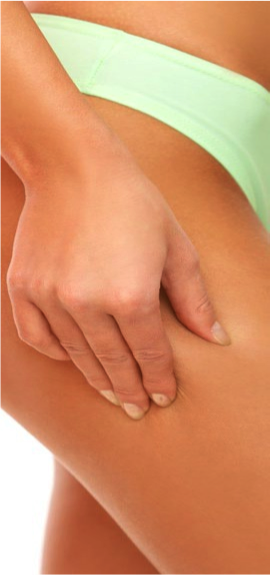 Degree / Stage 0
Degree / Stage 0
There is no alteration to the skin surface.
Degree / Stage 1
The skin of the affected area is smooth while standing or lying down,
but undulations on the skin surface can be seen on pinching the
skin or during muscle contraction.
Degree / Stage 2
The ‘‘orange peel’’ or ‘‘mattress’’ appearance is evident
when standing, without the use of any manipulation
(skin pinching or gluteus muscle contraction).
Degree / Stage 3
Presence of alterations described in second degree or stage II,
plus presence of raised and depressed areas and nodules.
Though establishing a diagnosis of cellulite is almost always by clinical examination, a few blood tests and at times a few imaging studies are done to rule out other conditions. It should always be borne in mind that ineffective or hardly effective aesthetic treatments have three inescapable consequences:
Clinical damage, aesthetic injury and, more frequently, serious psychological damage.

Therapeutic Strategy
Once clinical diagnosis is complete, a therapy aimed at a gradual recovery of the different aesthetic tissue disorders can be devised. The therapy of cellulite is a multi-pronged modality which combines
- Systemic Medications
- Local Medical Therapy (Topical Applications)
- Topical Procedures
- Surgical Modalities
For most patients, the most effective therapy is one which is a combination of all these modalities.
Systemic medications involve the use of tablets that are aimed at reducing the fluid, and resultant fibrosis in the extracellular spaces of the skin.
These include:
- Agents that increase microvascular flow
- Agents that reduce lipogenesis and promote lipolysis
- Agents that restore the normal structure of the dermal and subcutaneous tissue
- Agents that prevent or destroy free-radical formation
Local medical therapy involve the application and massaging in the skin (mesotherapy) of topical oils, liquids or gels with properties similar to the systemic medications.
The third method is that of using certain machines and machine aided procedures to reduce cellulite. The most common ones being
- Endermologie
- Beautytek
- Triactive
These techniques involve using the specific machines on the surface of the skin over multiple sittings to remove the underlying fluid, dissolve the fat and improve the skin.
The final part of the treatment armamentarium is surgery. It includes:
- Liposculpting This is a refined form of liposuction done with fine cannullaes (less than 2mm in size). The aim of the surgery is to remove all the small localized fat pockets and break the tight retracting fibrous band that result in the peau de orange appearance.
- Subcision
This is a procedure of localized release done using needles. - Carboxytherapy
This involves the injection of carbon dioxide gas in the subcutaneous plane over multiple sittings. - Lipolysis
This is done by injecting medicine which causes dissolution of the localized fat pockets.
The therapy for each person is planned to meet the individual’s needs. The therapy usually extends for a period varying from a few weeks to months during which multiple sittings of the treatment procedures are done, the person is re-evaluated, new procedures added and a lot of additional lifestyle modifications are advised to attain the desired effect.
Fundamental here is acceptance that cellulite is not a female whim or something considered unsightly, buta real disorder, or rather, different disorders that represent aesthetic pathologies that must be cared for from a medical and cosmetic point of view.


